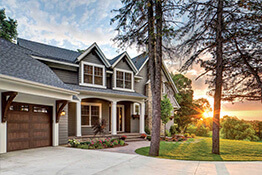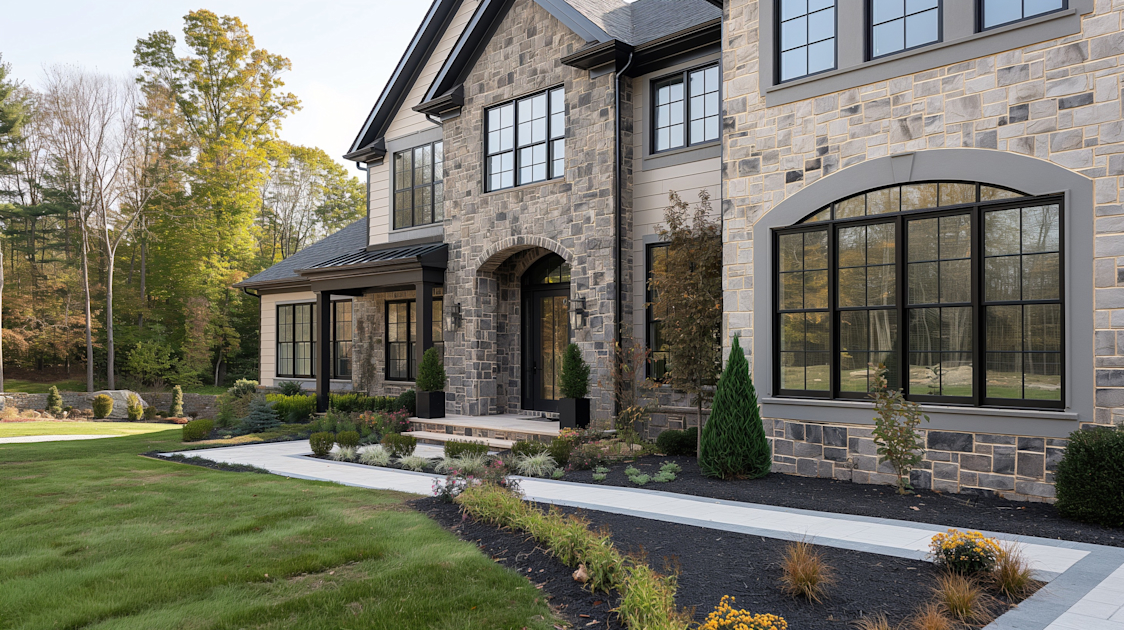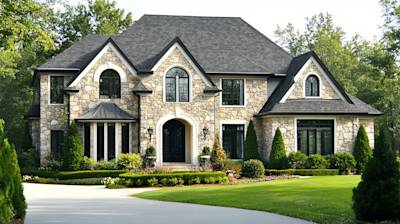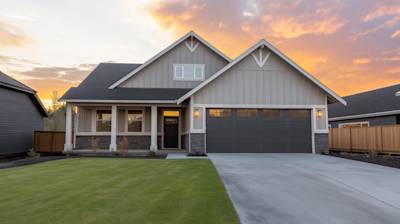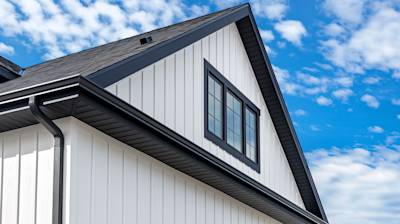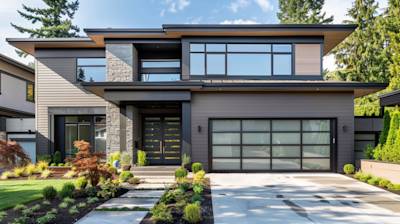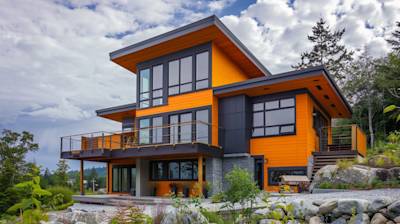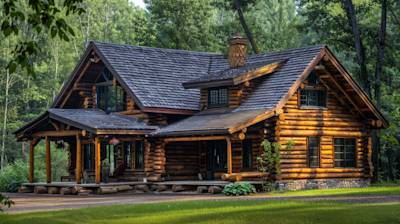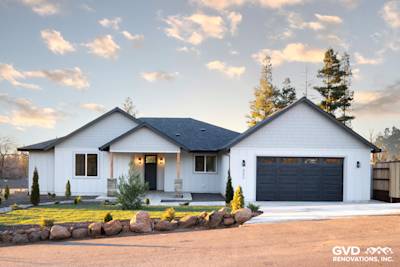Transforming the exterior of your home doesn‘t have to be a costly affair. One affordable, yet high-impact option to consider is faux stone siding. More than just a passing trend, this alternative to traditional stone has become increasingly popular among homeowners and commercial builders alike. But, why the surge in popularity? Does it really offer tangible benefits over real stone? In this guide we delve into the world of faux stone siding and show you why you might want to consider it for your next home or commercial renovation project.
What is Faux Stone Siding?
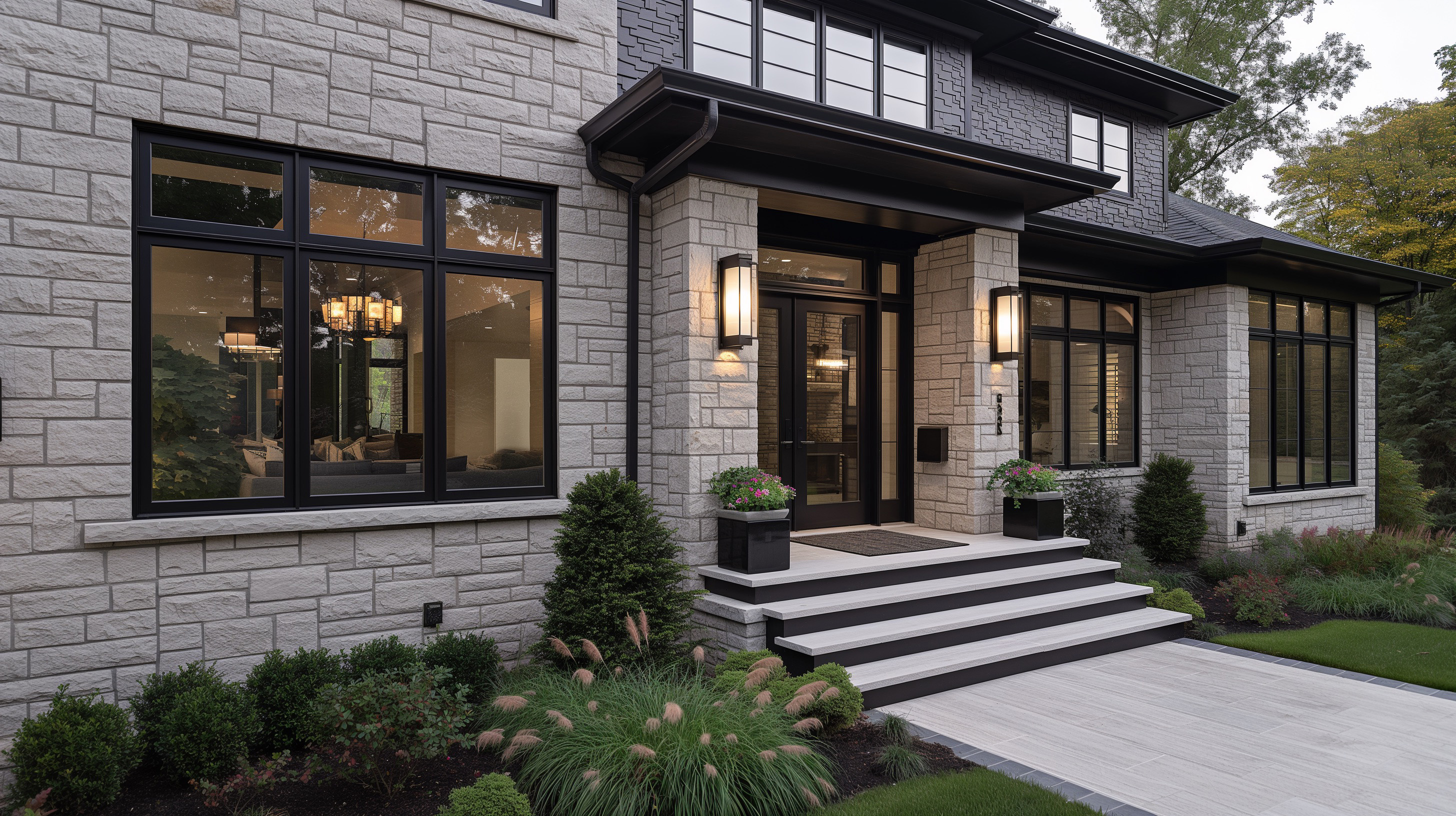
Faux stone siding, commonly referred to as stone veneer, artificial stone, manufactured stone, or cultured stone, is a type of decorative and protective covering used on the exterior or interior of buildings. It is engineered to replicate the look of natural stone while being lighter in weight, easier to install, and far less expensive.
How Faux Stone Siding is Made
The process of making faux stone siding involves combining Portland cement, lightweight filler (like pumice), and coloring pigments. These are then poured into molds made from real stone, casting an impression that captures the intricate details of the stone’s texture and form. Once dry, the outcome is a piece of faux stone siding that looks remarkably like the real thing.
Different Styles and Designs of Faux Stone Siding
Thanks to modern manufacturing processes, faux stone siding is available in an array of styles and designs. It can mimic virtually any type of stone, from granite, limestone, and sandstone, to river rock and more. Let's delve into a few of these types:
-
Fieldstone: This type of faux stone siding is designed to resemble a classic stone wall in the countryside.
-
Ledge stone: Here, the manufactured stone is thin-rectangular shaped, creating a contemporary look.
-
River rock: This design mimics the smoothly-rounded stones often found in rivers.
Faux Stone Siding Installation Process
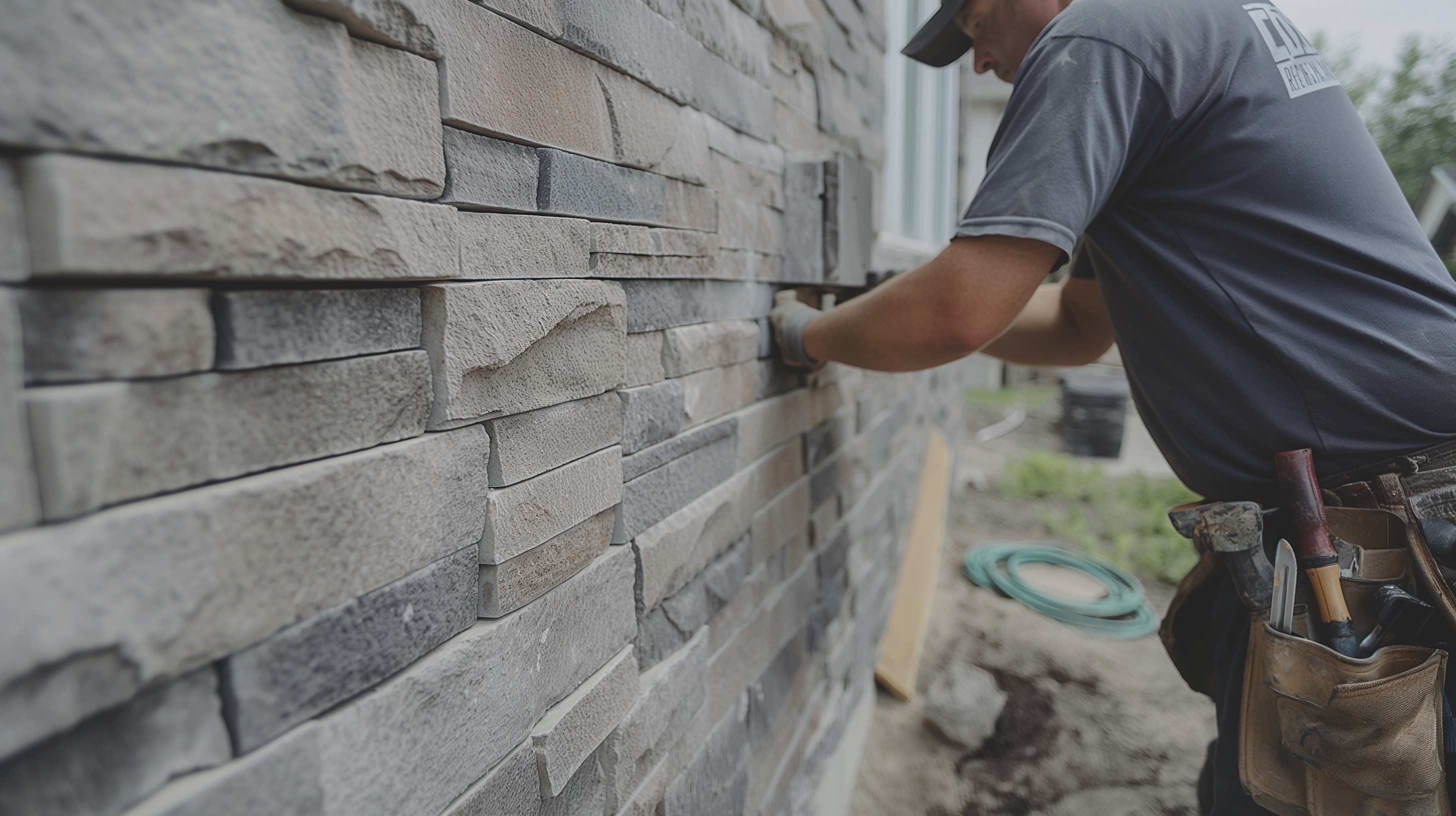
One of the standout benefits of faux stone siding is how relatively simple it is to install, especially in comparison to real stone. The siding often comes in panels that interlock or fit together seamlessly, reducing the need for mortar or grout. However, some styles and designs may require a professional for installation.
Tools Required for Installation
While specific tools may vary by manufacturer or type of faux stone siding, some basic tools generally required include:
- Saw
- Level
- Measuring Tape
- Chalk Line
- Construction Adhesive
- Masonry Screws
Faux Stone Siding Maintenance

Faux stone siding requires fairly minimal maintenance. It is designed to withstand various weather conditions and is resistant to pests and rot. A simple wash down with a hose and occasional inspection to ensure that the mortar has not cracked is generally sufficient.
Energy Efficiency: The Added Perk of Faux Stone Siding
Apart from aesthetics, one of the significant advantages of faux stone siding is the extra insulation it provides. Most manufacturers include a layer of insulation in the design, increasing the energy efficiency of your home.
Where to Shop for Faux Stone Siding
There are plenty of suppliers in the market for faux stone siding, from your local home improvement store to specialized online retailers. While shopping, remember to consider the size, color, texture, and price of the faux stone siding to determine what will be best for your project.
Whether you are building a new house or just upgrading the exterior of your current property, don't overlook faux stone siding. It offers the grandeur of natural stone without the heavy expense and complex installation process. Why not transform your home with this versatile and durable option?
Frequently Asked Questions about Faux Stone Siding
How long does Faux Stone Siding last?
Faux stone siding, when properly installed and maintained, can last for decades. Its longevity is comparable to that of genuine stone, and it's resistant to weather elements such as sun, rain, and wind. This makes it an excellent choice for long-term home improvement investments.
Can Faux Stone Siding withstand extreme weather?
Yes, faux stone siding is designed to withstand extreme weather conditions, including heavy rain, high wind, and temperature changes. It's built to handle the elements, which makes it a practical choice for homes located in harsh weather regions.
How does Faux Stone Siding compare to real stone?
Faux stone siding is designed to mimic the appearance of real stone, but typically comes at a lower cost and is also easier to install. While it might not have the exact same feel or weight as real stone, high-quality faux stone siding can look remarkably similar. Furthermore, faux stone siding offers a variety of design options that would be expensive or impossible to attain with real stone.
Is Faux Stone Siding energy efficient?
Faux stone siding can contribute to the overall energy efficiency of your home. Many varieties of faux stone siding are designed to include insulation, which can help keep your home warmer in winter and cooler in summer. Furthermore, the siding's resistance to weather can protect your home from wind and water damage, potentially reducing energy costs.
What is the maintenance like for Faux Stone Siding?
One of the advantages of faux stone siding is its low maintenance. It typically only needs a yearly inspection and occasional cleaning with a soft brush and mild detergent. Unlike real stone, it’s not necessary to reseal or repaint the siding. This cuts down significantly on upkeep time and costs.
Can I install Faux Stone Siding myself?
While it's possible for a skilled DIYer to install faux stone siding, it's often recommended to have it professionally installed. This ensures that the siding is installed correctly and securely, which impacts its performance and longevity. If you're considering self-installation, be sure to carefully follow all manufacturer's instructions.
Is Faux Stone Siding fire resistant?
Yes, most faux stone siding products are manufactured to be fire resistant. This can provide an added layer of safety to your home. However, it's always best to check with the manufacturer or your contractor to confirm these characteristics for your specific product.
Does Faux Stone Siding increase home value?
Adding faux stone siding to your home not only improves its appearance, but can also potentially increase its value. Potential buyers often appreciate the aesthetic appeal of stone siding, and the durability and low maintenance of faux stone siding can be attractive selling points.
Can I Paint my Faux Stone Siding?
Yes, you can! One of the advantages of faux stone siding is that it can be painted to match your home’s color scheme. Be sure to choose a high-quality paint that's suitable for exterior use, and consult with a professional if you're unsure about the best process.
Is Faux Stone Siding suitable for all homes?
Faux stone siding is versatile and can complement a range of architectural styles. Whether you have a modern or traditional design, there's likely a faux stone siding option that fits perfectly with your home's aesthetic. Just make sure your home's structure can support the additional weight of the siding.
Pros and Cons of Faux Stone Siding
Pros of Faux Stone Siding
Durability
Faux stone siding is known for its durability and longevity. Unlike natural stone, it’s not prone to chipping or cracking. This resilience makes it ideal for any climate.
- Resistance to harsh weather: Faux stone siding holds up well against rain, wind, sleet, and snow.
- UV protection: Many types of faux stone siding come with UV protection, ensuring the color won’t fade over time.
Stylistic Versatility
Faux stone siding comes in a wide array of designs, colors, and textures. It has the ability to replicate the esthetics of various types of natural stone such as granite, limestone, and river rock.
- Color choices: Faux stone siding comes in virtually any color, which gives homeowners more control over the appearance of their home.
- Design flexibility: Its lightweight nature allows the siding to be used in places where natural stone might not be feasible.
Cost-Effective
Faux stone siding is generally less expensive than natural stone both in terms of material and labor costs. Moreover, it also requires fewer repairs and replacements over time.
- Material cost: Faux stone is cheaper to manufacture and therefore less expensive to buy.
- Installation cost: Installing faux stone siding is often less time consuming thus charges associated with labor are less.
Cons of Faux Stone Siding
Authenticity
Even though faux stone siding can replicate the look of natural stone, it is still an imitation and cannot fully provide the same natural appeal or value.
- Visual differences: Up close, it is often easy to spot the difference between faux stone siding and natural stone.
- Misrepresentation: Faux stone siding might not be appropriate for historic or old-fashioned houses, as it can detract from the building's authenticity.
Damage and Repairs
Faux stone siding is not invincible. It can be damaged by heavy impact or constant exposure to harsh elements, leading to costly repairs or replacements.
- Brittleness: Some types of faux stone siding may be brittle, leading to cracks if struck by heavy objects.
- Degradation over time: Over many years, faux stone siding may begin to degrade and lose its color, requiring replacement.
Environmental Impact
The manufacturing process of faux stone siding can be less environmentally friendly compared to natural stone.
- Pollution: The manufacturing of faux stone siding can produce pollutants and waste.
- Non-biodegradable: Unlike natural stone, faux stone siding is not biodegradable and won't return to nature at the end of its life cycle.
In conclusion, while faux stone siding does offer several advantages in terms of cost-effectiveness, durability and design flexibility, it also comes with drawbacks such as environmental impact, potential damage and a lack of authenticity. Ultimately, the choice between faux stone siding and natural stone will come down to personal preference, budget and the specific needs of the building project.
Summary
Experience the elegance of real stone without the cost and hassle by using Faux Stone Siding. It is not only budget-friendly, but also easy to maintain. Its aesthetic appeal and durability make it a popular choice among homeowners. Whether it's for exterior walls or interior decor, this faux touch certainly brings forth a rich, natural feel to homes.
Enhance the curb appeal of your home with Faux Stone Siding. It is versatile in application and complements a wide variety of architectural styles due to its diverse color and texture options. Engineered with innovative material, it withstands harsh weather and wear-and-tear, ensuring it lasts for the long run while keeping your home charming and elegant.
Faux Stone Siding spotlights the beauty of traditional stone at a fraction of the price. Its lightweight nature makes for an easy, quick installation process. If you're looking to update your home with a fresh, classic look, don’t overlook this cost-effective yet high-quality option. Choose this fantastic substitute without compromising on strength, aesthetics, and affordability.
About GVD Renovations & Remodeling
Welcome to GVD Renovations & Remodeling, a seasoned construction company hailing from sunny Sacramento, CA where we believe in the beauty of dreams made tangible. We specialize in turning your visions of home improvement into reality with our comprehensive renovation services. From beautiful exteriors to captivating interiors, we cover it all. Our clients consider us not just a renovation company, but a part of their stories. So, join hands with us and turn your house into a dream home that reflects you.
Tags: home improvement, exterior design, faux stone siding,

